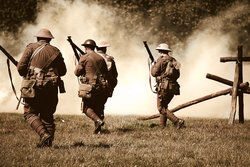In the 16th century, when Transylvania separated from Hungary, the town became the residence of the Transylvanian princes.
The crusade excited no enthusiasm in Hungary, but Andrew contrived to collect 15,000 men together, whom he led to Venice; whence, not without much haggling and the surrender of all the Hungarian claims upon Zara, about two-thirds of them were conveyed to Acre.
Its geographical range was formerly very extensive, and included Great Britain, France, the Netherlands, Switzerland, Germany, Bohemia, Hungary, Poland, Transylvania, Galicia, the Caucasus as far as the Caspian, southern Russia, Italy, Spain, Greece, Rumania, Bulgaria, Servia, and portions of central and northern Asia.
Examples may perhaps occasionally still be found in the uninhabited forests of Hungary and Transylvania, and occasionally in Spain and Greece, as well as in the Caucasus and in some of the Swiss cantons, but the original race has in most countries interbred with the domestic cat wherever the latter has penetrated."
He was present at the battle of Weisser Berg (near Prague), where the hopes of the elector palatine were blasted (November 8, 1620), passed the winter with the army in southern Bohemia, and next year served in Hungary under Karl Bonaventura de Longueval, Graf von Buquoy or Boucquoi (1571-1621).





